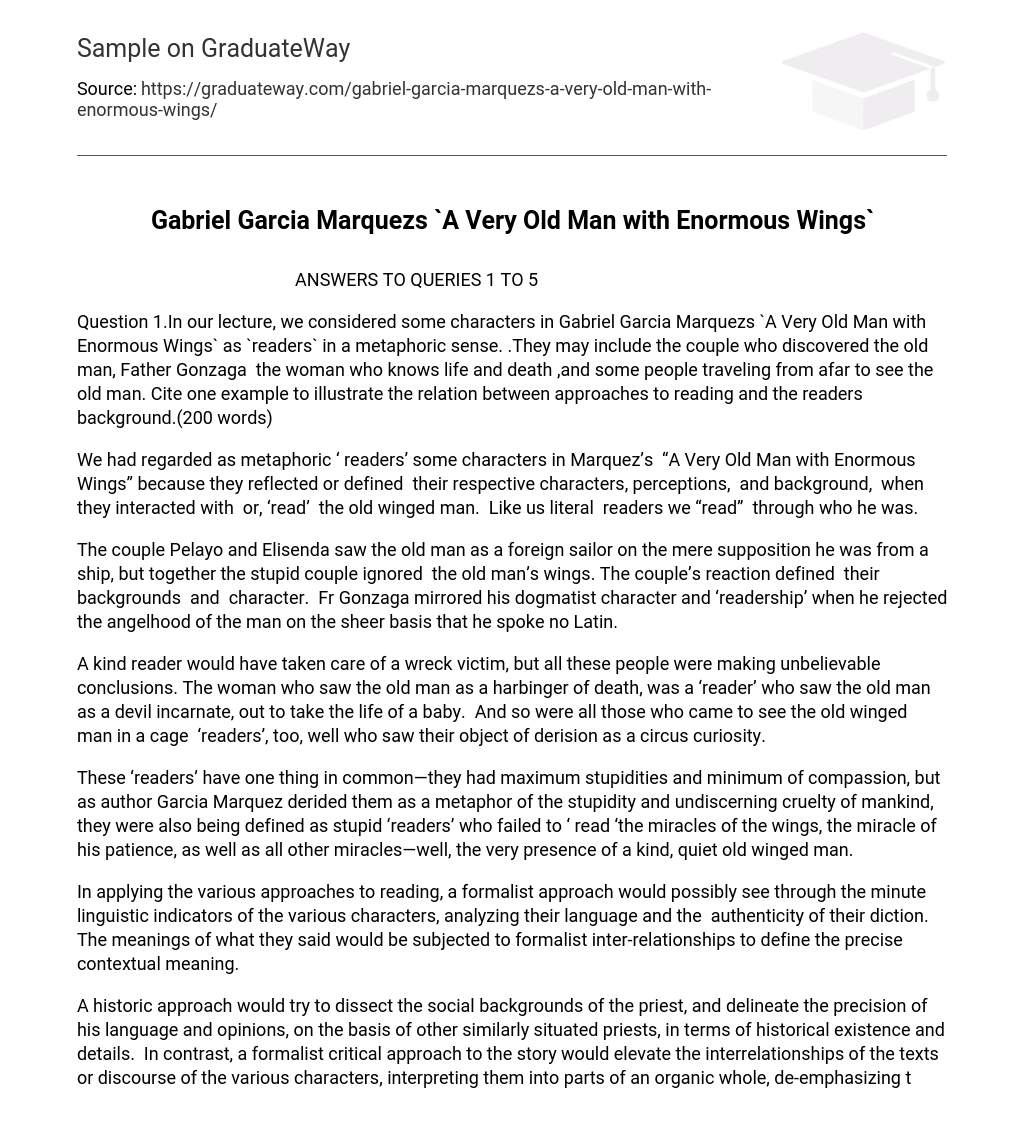In our lecture, we considered some characters in Gabriel Garcia Marquezs `A Very Old Man with Enormous Wings` as `readers` in a metaphoric sense. .They may include the couple who discovered the old man, Father Gonzaga the woman who knows life and death ,and some people traveling from afar to see the old man. Cite one example to illustrate the relation between approaches to reading and the readers background.
We had regarded as metaphoric ‘ readers’ some characters in Marquez’s “A Very Old Man with Enormous Wings” because they reflected or defined their respective characters, perceptions, and background, when they interacted with or, ‘read’ the old winged man. Like us literal readers we “read” through who he was.
The couple Pelayo and Elisenda saw the old man as a foreign sailor on the mere supposition he was from a ship, but together the stupid couple ignored the old man’s wings. The couple’s reaction defined their backgrounds and character. Fr Gonzaga mirrored his dogmatist character and ‘readership’ when he rejected the angelhood of the man on the sheer basis that he spoke no Latin.
A kind reader would have taken care of a wreck victim, but all these people were making unbelievable conclusions. The woman who saw the old man as a harbinger of death, was a ‘reader’ who saw the old man as a devil incarnate, out to take the life of a baby. And so were all those who came to see the old winged man in a cage ‘readers’, too, well who saw their object of derision as a circus curiosity.
These ‘readers’ have one thing in common—they had maximum stupidities and minimum of compassion, but as author Garcia Marquez derided them as a metaphor of the stupidity and undiscerning cruelty of mankind, they were also being defined as stupid ‘readers’ who failed to ‘ read ‘the miracles of the wings, the miracle of his patience, as well as all other miracles—well, the very presence of a kind, quiet old winged man.
In applying the various approaches to reading, a formalist approach would possibly see through the minute linguistic indicators of the various characters, analyzing their language and the authenticity of their diction. The meanings of what they said would be subjected to formalist inter-relationships to define the precise contextual meaning.
A historic approach would try to dissect the social backgrounds of the priest, and delineate the precision of his language and opinions, on the basis of other similarly situated priests, in terms of historical existence and details. In contrast, a formalist critical approach to the story would elevate the interrelationships of the texts or discourse of the various characters, interpreting them into parts of an organic whole, de-emphasizing the external facts of what period this fiction could authentically be placed or situated.
As actual “true” reader in contrast with the metaphoric one, I would prefer a combination of approaches. A reader-responsive critical theory would work best for me, because the meaning of the story is a dialectically or inter-actively arrived at: the final meaning is what the author and myself has made of it. Inter-active because, my interpretation of the work arose from my own personal experiences (for example, my own conception of an angel), other than what the author himself has originally intended. The approaches to reading would then serve as a set of tools that can make us understand this great work in many levels and from many perspectives.





